 W
WAllahverdi Khan was an Iranian general and statesman of Georgian origin who, initially a gholām, rose to high office in the Safavid state.
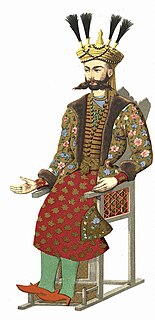 W
WConstantine II, of the Bagrationi dynasty, was a king of Georgia from 1478 until his death. Early in the 1490s, he had to recognise the independence of his rival rulers of Imereti and Kakheti, and to confine his power to Kartli. In 1505, Constantine II died, and was succeeded by his son David X.
 W
WDavid X (1482–1526) was a king of the Georgian kingdom of Kartli from 1505 to 1525.
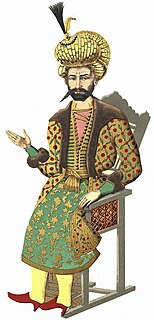 W
WDavid XI or Dāwūd Khan II was King of Kartli. A convert to Islam, he was appointed as Khan of Kartli by the Persian Shah Tahmasp I from 1562 to 1578.
 W
WGeorge II, of the Bagrationi Dynasty, was a king of Imereti from 1565 to 1585.
 W
WGeorge IX was a king of the Georgian kingdom of Kartli from 1525 to 1527.
 W
WTinatin Gurieli was queen consort of Kakheti, a kingdom in eastern Georgia, as the first wife of King Levan. A daughter of Mamia I Gurieli, Prince of Guria, she married Levan c. 1520 and bore him at least two sons, including the future Alexander II. She divorced Levan at her own will and retired to the Shuamta monastery, which she had built in Kakheti.
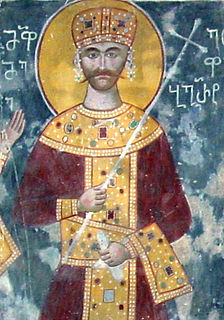 W
WBagrat III (1495-1565), of the Bagrationi dynasty, was a King of Imereti from April 1, 1510, to 1565. He succeeded upon the death of his father, Alexander II, and faced repeated assaults from the Ottoman Turks as well as the conflicts with his ostensible vassal princes of Mingrelia, Guria, and Abkhazia who were frequently joining the enemy.
 W
WLevan I Dadiani was a member of the House of Dadiani and ruler of Odishi, that is, Mingrelia, in western Georgia. He succeeded on the death of his father, Mamia III Dadiani, as eristavi ("duke") of Odishi and ex officio mandaturt-ukhutsesi of Imereti in 1533. Dadiani's break with the king of Imereti brought about his downfall and imprisonment in 1546. He was able to escape and regain his possessions, securing Ottoman support for his independence from Imereti.
 W
WLuarsab I, of the Bagrationi dynasty, was a king of the Georgian Kingdom of Kartli from 1527 to 1556 or from 1534 to 1558. Persistent in his resistance against Safavid Persian aggression, he was killed in the Battle of Garisi.
 W
WManuchar I Dadiani was Prince of Mingrelia, of the House of Dadiani, from 1590 until his death. A younger son of Levan I Dadiani, he succeeded on the death of his elder brother, Mamia IV Dadiani.
 W
WNestan-Darejan was queen consort of Kartli, a kingdom in eastern Georgia, as the wife of King Simon I, whom she married in 1559. Nestan-Darejan was a daughter of King Levan of Kakheti and a half-sister of Levan's successor to the throne of Kingdom of Kakheti, Alexander II. Her husband spent nearly five decades fighting the Safavid Iranian and Ottoman encroachments on his kingdom, twice losing his throne and personal freedom. Nestan-Darejan suffered further, being humiliated by his half-brother, the king of Kakheti, who capitalized on Simon's difficulties to attack and loot Kartli. After Simon had been sent a prisoner to Iran in 1569, Nestan-Darejan's estates had been pillaged by Prince Bardzim Amilakhori, Alexander's father-in-law; and in 1580, following Simon's return to Kartli and his defeat by Alexander at Dighomi, the latter carried off after the battle his half-sister's drawers on the point of a lance. Nestan-Darejan outlived her husband and died sometime after 1612, having mothered six children, including Simon's successor to the throne of Kartli, George X.
 W
WSt. Nicholas V, also known as Nicholas VIII was the Catholicos Patriarch of Georgia from 28 February 1584 to 1591. He was born into the Bagrationi dynasty of Kakheti, a son of King Levan. He was canonized by the Georgian Orthodox Church as the Holy Father Nicholas the Catholicos of Georgia, his feast day marked on 18 February.
 W
WQvarqvare III Jaqeli (1469–1535) was a Georgian ruling Prince and Atabeg of Samtskhe-Saatabago during 1518–1535. Member of the Jaqeli family and son of Atabeg Kaikhosro I Jaqeli. His failure to capture the throne at the death of his father Kaikhosro may have been caused by the ambition of his uncle Mzetchabuki, who had seized Atabeg's title from him. Despite this Mzetchabuk Jaqeli declared Qvarqare as his successor. During his uncle's reign Qvarqvare actively involved in state affairs. In 1515 ill Mzetchabuk resigned from the throne and came to the Monastery as a monk. Qvarqvare couldn't ascend to the Meskhetian throne, because his second uncle Manuchar I had revolted. Qvarqvare went to Safavid Persia, became vassal of Shah Ismail I and lived at his court in Tabriz until his accession. In 1518 Qvarqvare commanded Qizilbash army and invaded Samtskhe. Persians dethroned Manuchar I and placed Qvarqvare on the throne. Manuchar invited Ottomans to fight against Safavids and overthrow his nephew, but Qvarqvare's forces defeated him at the battle near Erzurum, after which Manuchar escaped to the Ottoman empire. During Qvarqvare's reign Persian influence on Samtskhe was growing day by day. Because of that Turks greatly damaged the country and especially its southwestern region. Meskhetian lords had recognized that under Qvarqvare's rule Samtskhe would finally turn to the Enemy's hands. They made an alliance with the Georgian kings, Bagrat III of Imereti and Luarsab I of Kartli to end up Jaqelian rule and protect Samtskhe from dominant Muslim empires. In 1535 King Bagrat III invaded Samtskhe. He defeated and captured Qvarqvare III at the Battle of Murjakheti near Akhalkalaki, Georgians had annexed Principality of Samtskhe. Qvarqvare died in prison. A few years later, his survived youngest son Kaikhosro II requested Ottomans to expel Imeretian and Kartlian forces from Samtskhe. In 1545, at the Battle of Sokhoista, Kaikhosro defeated Bagrat III, after which he reinstated his legitimate throne. Samtskhe became vassal of the Ottoman empire. Qvarqvare III's descendants ruled Samtskhe-Saatabago and then Childir Eyalet until 1820s.
 W
WQvarqvare IV Jaqeli was a Georgian Prince and Atabeg of Samtskhe-Saatabago, ruling nominally in 1573–1581. He was member of the Jaqeli family and the son of Kaikhosro II Jaqeli. During his nominal reign Meskhetian lords revolted several times against Jaqelian rule. Uprisings were suppressed by Ottomans. In 1578 Ottomans started new war against Safavid Persia for the hole territory of Caucasus. Lala Mustafa Pasha invaded Georgia. Qvarqvare IV obeyed him. Pasha had decided to send Qvarqvare and his younger brother Manuchar to Constantinople for recognizing Ottoman absolute rule in Samtskhe. Qvarqvare left the government to his mother, Dedisimedi and went to the capital of the Ottoman Empire. In 1579 by the order of Sultan Murad III Ottomans divided Samtskhe-Saatabago into eight Sanjaks and established Childir Eyalet on the lands of Meskheti. Qvarqvare IV was appointed as Christian ruler of Childir Eyalet, but his brother Manuchar converted to Islam under the name of Mustafa and became the Ottoman Pasha. Qvarqvare died childless in 1581 and was succeeded by his Muslim brother Manuchar II.
 W
WGiorgi Saakadze the Grand Mouravi was a Georgian politician and military commander who played an important but contradictory role in the politics of the early 17th-century Georgia. He was also known as Grand Mouravi in Georgia, Mūrāv-Beg in Persia and Māūrāv-Hūn or Māġrāv-Bek in the Ottoman Empire for having served as a mouravi of Tbilisi.
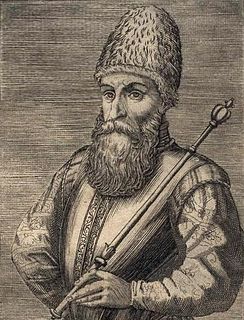 W
WSimon I the Great also known as Svimon (1537–1611), of the Bagrationi dynasty, was a Georgian king of Kartli from 1556 to 1569 and again from 1578 to 1599. His first tenure was marked by war against the Persian domination of Georgia. In 1569 he was captured by the Persians, and spent nine years in captivity. In 1578 he was released and reinstalled in Kartli. During this period, he fought as a Persian subject against the Ottoman domination of Georgia. In 1599 Simon I was captured by the Ottomans and died in captivity. During 1557 to 1569 he was known as Mahmud Khan and from 1578 to 1599 as Shahnavaz Khan
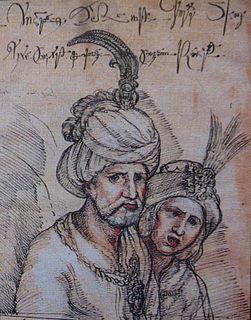 W
WTeimuraz I (1589–1661), of the Bagrationi Dynasty, was a Georgian monarch who ruled, with intermissions, as King of Kakheti from 1605 to 1648 and also of Kartli from 1625 to 1633. The eldest son of David I and Ketevan, Teimuraz spent most of his childhood at the court of Shah of Iran, where he came to be known as Tahmuras Khan. He was made king of Kakheti following a revolt against his reigning uncle, Constantine I, in 1605. From 1614 on, he waged a five-decade long struggle against the Safavid Iranian domination of Georgia in the course of which he lost several members of his family and ended up his life as the shah's prisoner at Astarabad at the age of 74.